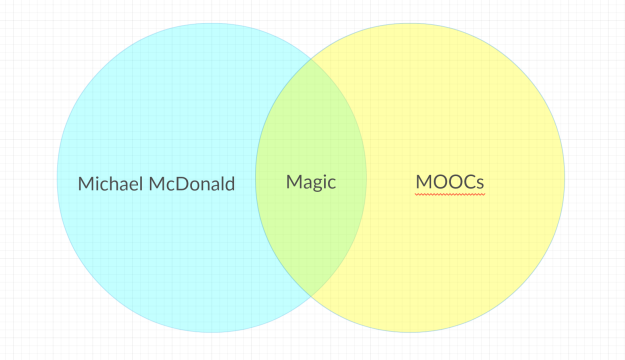Republished from edutechnicalities
The history of edutainment, a mid-20th Century portmanteau used to describe the mix of broadcast contents with an educational context, is a fascinating field, and Audrey Watters’ Story of The Learning Channel is an important addition to a critical reader on the relationship of broadcast media, ownership rights and the education superstructure. Noting how the current state of The Learning Channel TLC evokes responses of, “Remember when it was called The Learning Channel,” Audrey presents the history of the infrastructure which created what was a public-public partnership between government agencies to provide satellite-based educational television (conceptualized in the 1960s, partnered with more public agencies and enacted in the early 1970s), and how public-public became public-private became private became a host of barrel-scraping reality TV fare. It is an excellent read.
The article ends with questions to consider when engaging broadcast television, education, edutainment and the other terms and subfields that inhabit this realm:
- Who owns the “pipes”? Who owns the means by which content is transmitted? Who owns the satellites? Who owns the spectrum? Who owns the cables? Who owns the network?
- What do we mean by “educational content”? In particular, how has our definition of “documentary” changed over the last few decades? How does this shape what media – in form and in content – enters the classroom?
- How have regional educational agencies and distance education providers – particularly those offering for-credit classes – been affected by the commercialization of content and delivery?
- How has education become increasingly commercialized? How might education on the Internet and via various computer technologies be following down that very path taken by education on cable TV?
This topic intersects with my emerging research; I am thankful to Audrey for this discussion and the energy behind it. I would like to join the conversation as part of an emergent discussion.
In 2014, Coursera announced a partnership with Curiosity.com, a start-up launched from within Discovery Communications, whom Coursera heralded as the parent company of Discovery and Animal Planet. (Note: in November Curiosity.com spun off and away from the Discovery Communications paternity) At the time, I blogged about the partnership, briefly touching on the histories of Discovery and The Learning Channel, as well as the media conglomerate that would form from their 1990s merger/acquisition and growth. I framed this in the context of edutainment, which took me down a whirlwind of Disney history, resulting in scholarship on the relationship between the learning objects/resources of the OER movement, edutainment, and the ‘free-as-in-beer’ resources one finds in Coursera/edX/curiosity.com. The expansion of this research continues; at the present I am adopting a postmodern lens to look at the history of broadcast contents within education, in their utilitarian existence as well as their social/political/cultural/philosophical/power contexts too.
Continue reading →










